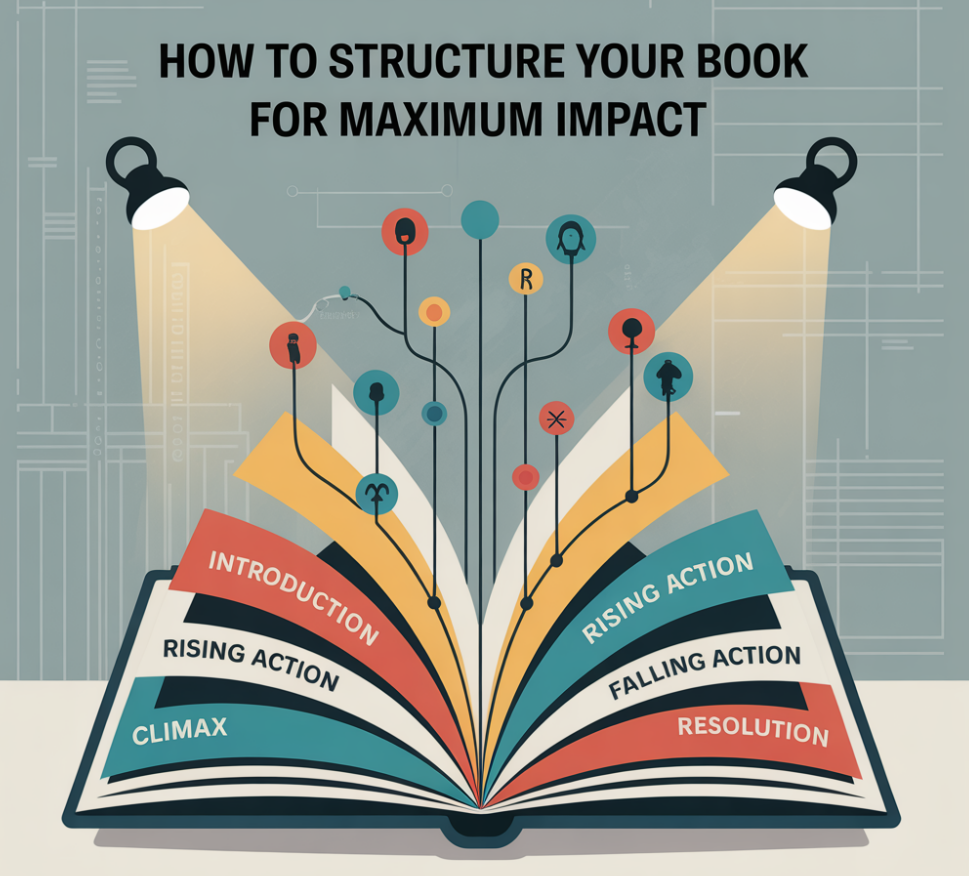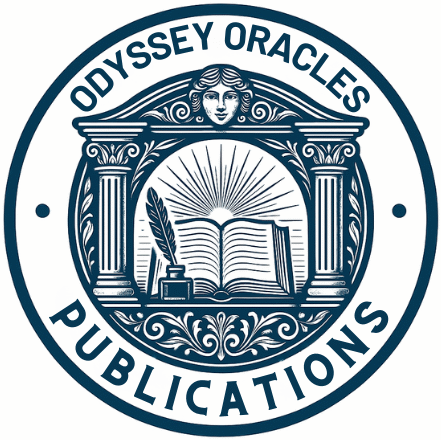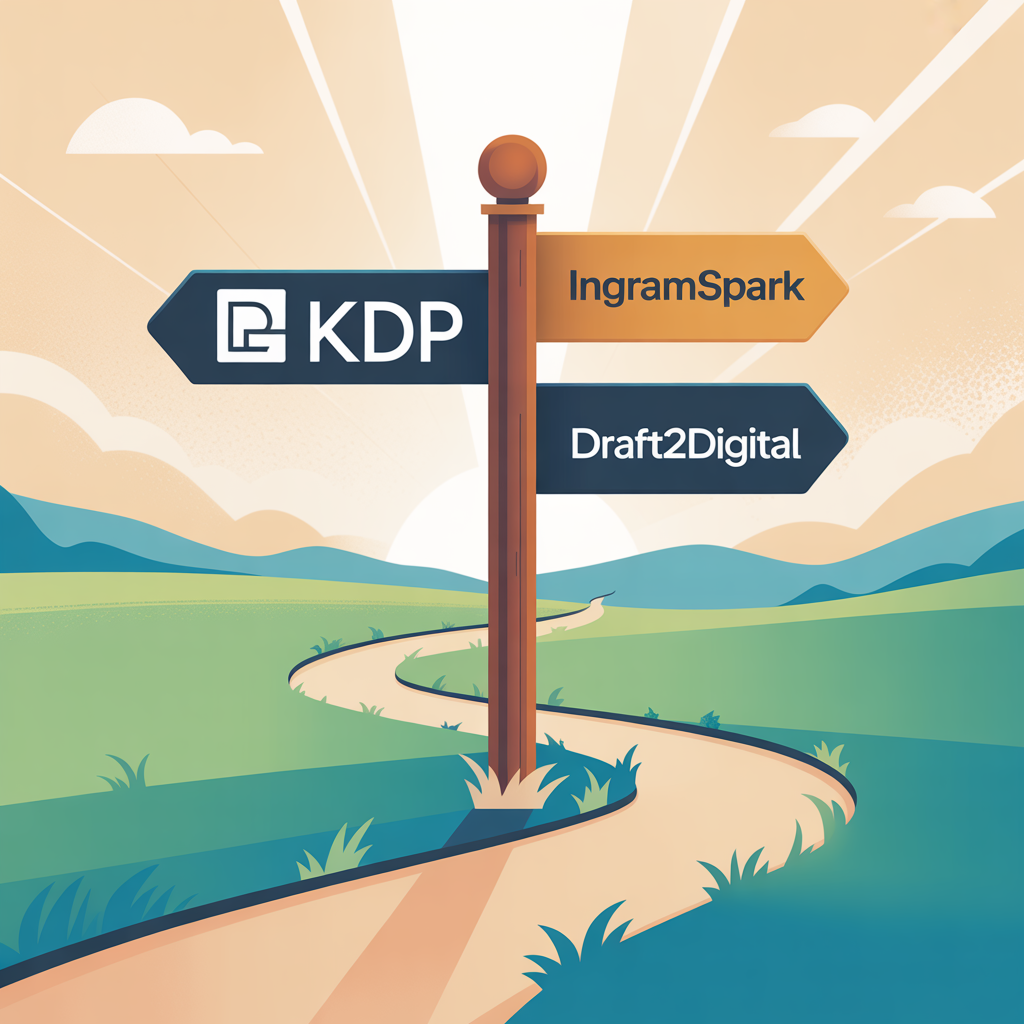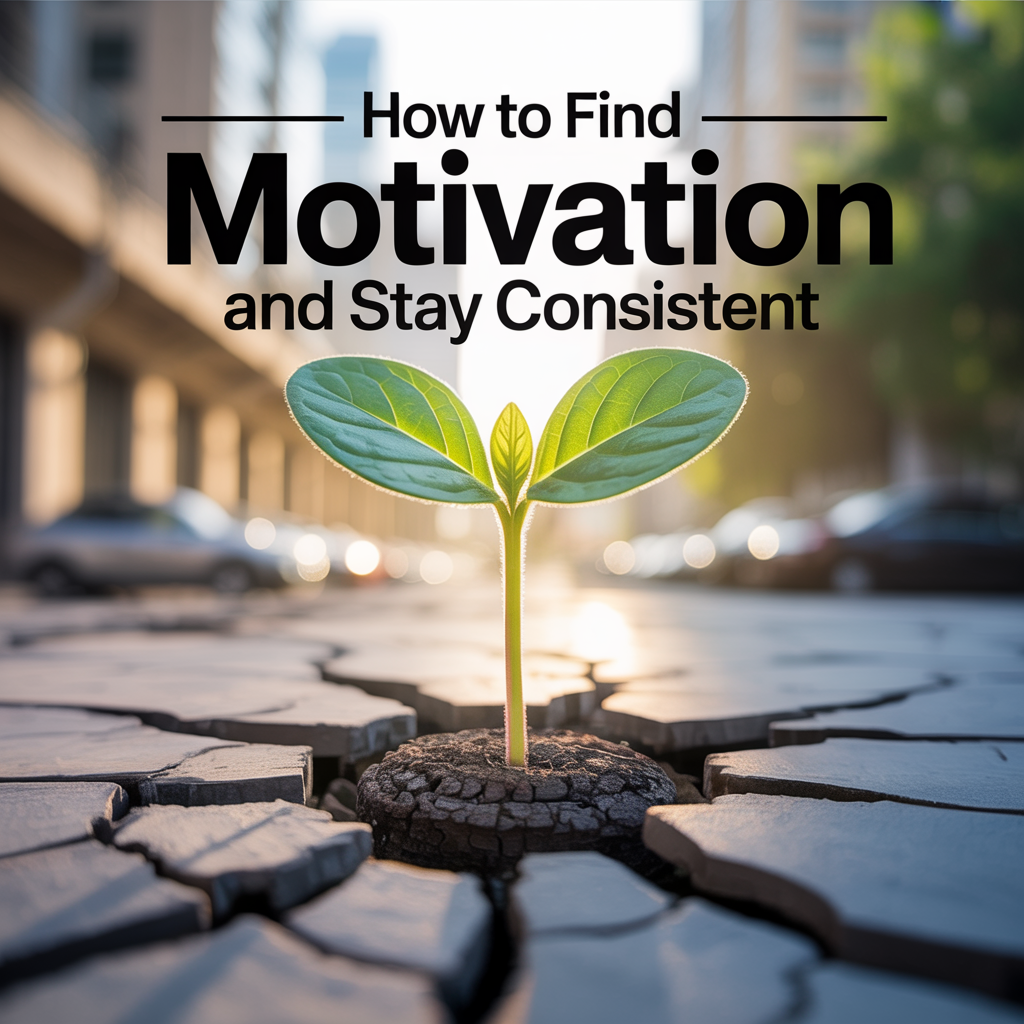How To Structure Your Book For Maximum Impact

Introduction: The Art of Impactful Storytelling
A book does more than tell a story or impart knowledge; it’s a bridge between you and your readers. The goal is to create something that resonates deeply with every person who flips through its pages. To do that, understanding the fundamental purpose of your book is crucial. Is it meant to entertain, educate, or inspire action? Clearly defining this early on will guide every decision you make as you build your masterpiece, providing you with a clear direction and focus.
Every memorable book has a backbone: a structure that shapes the narrative and flow. Think of your book’s structure as the framework that makes the difference between a scattered read and an impactful one. This structure is crucial not just for coherence but for making sure every point hits home the way you intend it to.
One of the first things to consider is who your primary audience is. Are you writing for beginners curious about a new topic or for seasoned pros looking to deepen their expertise? Knowing your audience means tailoring your content to meet their specific needs and expectations, enriching their reading experience, and ensuring they find value in your book.
The Role of Planning: Laying Down the Blueprint
Before the pen touches paper, or in more modern terms, before fingers hit the keyboard, planning your book acts as the essential groundwork. Skipping this step often leads to a shaky narrative and a confusing read. A solid plan is like your roadmap, ensuring you don’t veer off course as you navigate through the writing journey, giving you a sense of reassurance and confidence in your work.
Start with detailed research and brainstorming. Gather all the ideas simmering in your mind and lay them out. This phase isn’t about perfection—it’s about exploring every possibility. Whether it’s jotting down random thoughts or diving into specific topic research, capturing everything initially provides a treasure trove of material when you start writing.
Creating an effective outline transforms chaos into order. Begin sketching out your chapters, identifying major themes and points you want to cover. An outline doesn’t have to be set in stone, but it should give you structure and flexibility. It helps identify gaps in your narrative and narrows down what’s truly important, allowing the rest to fall away.
Mind maps, and storyboards become your visual allies in this process. They aren’t just tools for artists—they allow you to see the big picture, connecting ideas and themes visually. It’s often easier to spot relationships between chapters or identify plot holes when you can see everything laid out clearly on paper or a digital board.
Crafting a Compelling Opening: Grab Your Readers from the Start
Kicking off your book with a killer introduction sets the tone for what’s to come. That first page doesn’t just introduce your topic; it invites readers to invest their time and emotions in your story. An engaging start is like striking a match—it lights a fire in your reader’s mind that leads them through the pages ahead.
Hooks are more than catchy phrases. Think of them as irresistible invitations that compel your readers to stay. It could be a shocking statistic, an intriguing question, or a bold statement that challenges the status quo. Whatever form it takes, the hook captures curiosity and pulls readers in from the get-go, making them feel intrigued and engaged from the very beginning.
Beyond the initial hook, building an emotional connection is key. It’s about striking chords with your audience, making them laugh, think, or even cry. Sharing personal anecdotes or relatable scenarios makes your writing feel genuine and approachable. Readers want to see themselves in your story or at least empathize with the journey you’re presenting.
Once you have their attention, use the opening to set the stage for what’s to come. Give readers a taste of the themes, conflicts, or questions you’ll explore. It’s not about spoiling the book but rather offering a glimpse into the adventure that lies ahead. This invites readers to buckle down and continue with anticipation for what’s next.
Building a Strong Middle: Keeping the Momentum Alive
Keeping the readers engaged is all about maintaining momentum through the middle sections of your book. This is where the real meat of your content lies, holding everything together and moving the story or argument forward.
Developing content with depth is crucial at this stage. Every chapter needs layers, much like a well-crafted argument or a thrilling plot. Dig into the details of your characters, themes, or arguments, but do it in a way that continuously adds to the reader’s understanding and keeps them interested.
Balancing pacing within each chapter is another key element. If every page feels like a climax, you’ll exhaust your readers; if it drags, you risk losing them. Mix up your rhythm by alternating between fast-paced and slower, more reflective sections. This creates a natural flow, giving readers a sense of progression and preventing stagnation.
Subheadings are your friends here. They help structure ideas, making complex information digestible and guiding readers through intricate subjects with ease. Use them to break down long chapters into manageable parts, maintaining clarity and keeping the narrative on track.
Navigating Complex Themes: Managing Detail and Depth
Tackling complex themes might seem daunting, but it’s really about how you break them down. Simplicity is your ally here. You don’t have to dumb things down; just lay them out clearly. Paint pictures with your words that readers can easily visualize.
Once you’re in the thick of dense material, maintaining clarity without losing depth is like walking a tightrope. Know when to zoom in on details and when to pull back for the bigger picture. It’s about creating layers and giving substance without overwhelming the reader.
Incorporating expert insights and data lends credibility to your book, but too much can drown the narrative. Sprinkle these elements wisely, using them to support your arguments or enrich the story. Always tie them back to your main points to maintain relevance.
Footnotes, sidebars, or appendices can be lifesavers when you have additional data or context. By keeping these extra tidbits separate from your main text, you’re giving readers the option to explore further without disrupting their reading experience.
Concluding with Impact: Leaving a Lasting Impression
The conclusion is your chance to cement your book’s impact, leaving readers with something that sticks long after they’ve finished reading. Whether you’re tying up a narrative or providing a resolution to a complex argument, aim for a sense of completion.
Crafting a reflective conclusion involves revisiting the core themes without regurgitating previous content. It’s about reinforcing what matters and why your insights or stories resonate beyond the page.
Encouraging reader engagement can transform your book from a solitary read into a shared experience. Pose questions, suggest further reading, or prompt readers to take action in their own lives. This kind of interaction makes your book feel like a dialogue rather than a monologue.
Avoid summarizing your book in a way that feels redundant. Instead, spotlight key takeaways with freshness and clarity. Highlight the essence of your work in a way that inspires and energizes your readers, encouraging them to ponder long after they’ve turned the last page.
Editing and Refining: The Path to Perfection
Editing isn’t just about tidying up; it’s about sharpening your book to its finest form. A rigorous editing process will iron out inconsistencies and improve the overall clarity and quality of your work.
Being your own critic is tough, so welcome feedback from beta readers and professional editors. They’ll spot things you’ve missed and offer fresh perspectives. Even the best writers benefit massively from a set of fresh eyes.
Proofreading is about more than catching typos—it ensures your style and tone remain consistent throughout. This consistency keeps readers grounded and enhances the professionalism of your work.
Don’t underestimate the power of taking breaks between drafts. Stepping away from your manuscript can offer new insights and help avoid burnout. When you return, you’ll notice things you might have glossed over before.
Editing tools and software can be invaluable, but they don’t replace the human touch. Use them to enhance your process, not dictate it. Language isn’t just about rules; it’s about rhythm and style, things only a human can fully appreciate.
Design and Visual Appeal: Enhancing the Reader Experience
Visual appeal is more than just a pretty cover—it’s a vital part of your book’s allure and readability. A reader’s first impression often begins with the design, so make it memorable and aligned with the book’s message.
Choosing an attractive cover involves thoughtful design elements that reflect the essence of your book. It needs to grab attention and communicate the vibe of what’s inside at a glance.
Inside the book, well-considered layout and typography enhance readability, guiding the reader’s eye smoothly through the text. Clean, organized pages prevent reader fatigue, ensuring that visual clutter doesn’t steal focus from your words.
Incorporating visuals, such as infographics or illustrations, can help illuminate complex information. These elements not only break up the text but also offer alternative ways for readers to engage and digest the content.
Accessibility should never be an afterthought. Consider how font size, color contrast, and format affect all your potential readers. Making your book accessible ensures everyone, regardless of ability, can enjoy your work equally.






